Utilities will generally shut down power to an area during wildfires to help protect first responders and to prevent any downed lines from contributing to the spread of the fire. PSE has expanded the scope of their preparation for such events by developing a protocol that may be utilized during extreme weather forecasts leading to potential wildfire conditions. Policies like this are already in place in California and Oregon however this is new for Washington. It provides guidelines for shutting power down before a fire starts. With the planned outages, there would be advanced notice to help people plan for these possible events..
Apparently the wildfires that were started by power lines in Northern California, and the calamity in Lahaina have motivated forward-thinking utilities to plan ahead.
“This is a tool of last resort for us…making the very difficult decision to turn power off to make sure that community safety is number one.”
PSE is asking customers that rely on at-home medical equipment to update their accounts to add life support status.
https://www.kitsapsun.com/story/news/2024/06/11/puget-sound-energy-power-shutoff-plan-for-wildfire-risk-in-kitsap/74019541007/
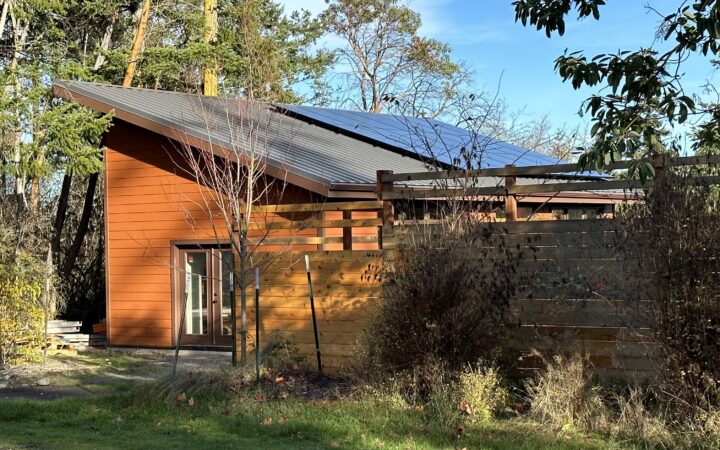
9 KW Sunpower Array – Port Townsend – December 2023
by Andy Cochrane | Jun 14, 2024
So often I see articles that I find frustrating because of incorrect information or lack of clarity. In this case, I think Annie Midori Atherton has done an excellent job of speaking to multiple people involved in the clean energy transofrmation in our state and has put together a nice article. https://www.seattletimes.com/explore/at-home/looking-to-make-an-energy-switch-heres-how-to-harness-the-power-of-the-sun/
You may need a Seattle Times subscription or to disable ad blockers in order to read this.
The key takeaways that I hope this article communicates to people are:
- Our nation and especially our state have set ambitious goals for clean energy and have made significant economic commitments to help homeowners install solar. We will increase our energy generation while decreasing our carbon emissions.
- Solar works very well if you have a good sunny roof. Our state’s Net Metering Law protects homeowners and makes certain they get the full value of all of the electricity they produce.
- While solar is not inexpensive, it is an investment in your house that significantly increases the home value immediately, while saving you money every month for decades to come. It can be viewed as a hedge against rising energy costs.
- As the solar market has progressed from mainly early adopters to now mainstream interest, many new companies have entered Washington state and not all of them share the ethic that drove many of us long-timers in the industry to start our businesses. Buyer beware! If you feel pressured, if the company is pushing in-house financing, if they can’t tell you about the specific products they are proposing, or if you can’t pick up the phone and talk to the owner, or visit their office – those should all be red-flags that you may not get the best project you have in mind. The best advice is to make sure you are dealing with a local company that has been around a long time, and that is a member of the Washington Solar Energy Industry Association. There are criteria for membership that require integrity, and not all businesses that apply for membership meet those standards.
We hope you enjoy this article and are moved to positive action. We would be happy to speak with you and apply our 22 years of solar installation experience to your home.
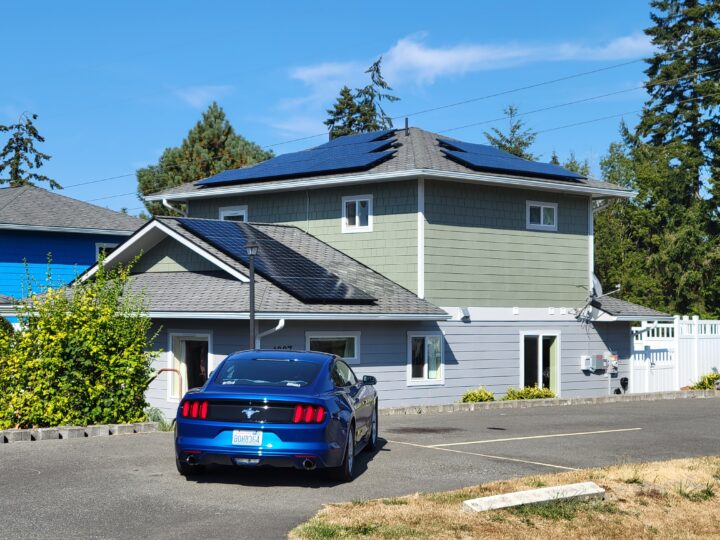
8.8 KW Sunpower, Port Angeles, WA 2022
by Andy Cochrane | May 27, 2024
On Earth Day a couple of weeks ago, President Biden announced funding results in regards to $7 billion in grants nationwide through the EPA’s Solar For All program, a part of 2022’s Inflation Reduction Act. It makes a lot of sense to address inflation through energy policy because the more energy we can create without carbon-based fuel like coal and oil, the better off we will all be from both a pollution reduction and health standpoint, and also economically by avoiding being subject to the utility and oil industries’ capricious and self-serving pricing policies, which are inflationary.
Here in Washington, our state will receive $156 million in federal funds, which will be increased by $100 million of our own funds derived from the polution allowances that were part of our state’s Cap and Invest program in the 2023 Climate Commitment Act. These funds will go mainly to four programs run by the Dept of Commerce.
- Grants for Low Income Homeowners – the guidelines or timing of these grants has not yet been announced – we will publicize as soon as we know
- Grants for Low Income Renters and Tribe Members to participate in Community Solar Arrays at no cost
- Owners of Multi-Family Buildings will be able to get no-interest, forgiveable loans for energy efficiency improvements and electrical upgrades, if solar is a part of the program and if the benefits go to the tenants.
- Additional partnership with Tribes to help expand solar for their members on their lands
It is forecast that these programs will result in solar on about 3000 additional homes.
These programs will not be aimed at our core clientele which is middle class homeowners. These programs are for renters, low-income homeowners, tribal members, and landlords of multi-family buildings. We are excited to see these markets being served by solar incentives. These sectors have traditionally been passed over by the standard solar incentive mechanism, which has been tax credits. There is still a 30% federal tax credit which will continue to be the main incentive mechanism encouraging solar installation for most homeowners.
This information was summarized in an article carried by the Peninsula Daily News, linked below. Be sure to support your local newspaper!
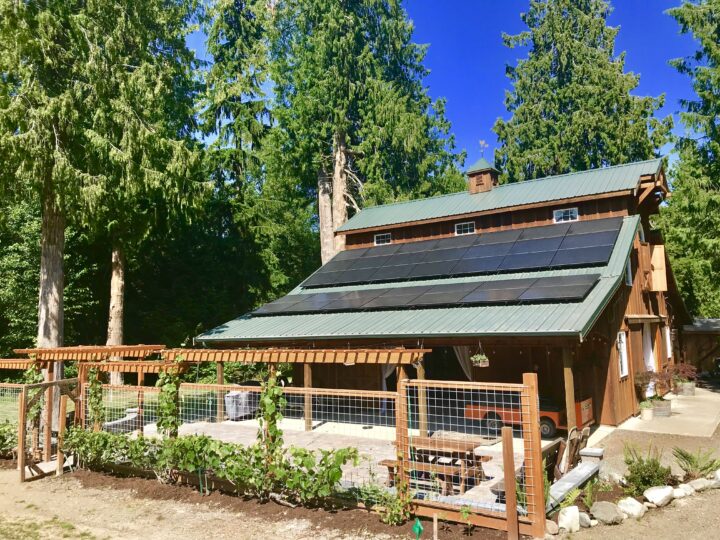
Raincoast Farms, 12 KW Sunpower Array, Jefferson PUD Grid, Port Townsend, 2018
Federal funds will help thousands get solar power for free
by Andy Cochrane | May 6, 2024
“Power Trip Energy was amazing to work with. They provided multiple options based upon several usage scenarios. They patiently answered questions. They took care of all of the permits and approvals required. The installation crew was capable, quiet, and clean – we hardly knew they were here.
They came out same day within a couple of hours of the utility installing the net-metering meter. Excellent communications and clarity.
Thank you again for your patience and flexibility with our situation. We broke-even on production/usage yesterday, and that was only with about five peak production hours and partly cloudy conditions. We can’t wait to see how it does during the peak production months! Please don’t hesitate to reach-out if we can help support your on-going efforts in the community.” Jonathan & Nancy
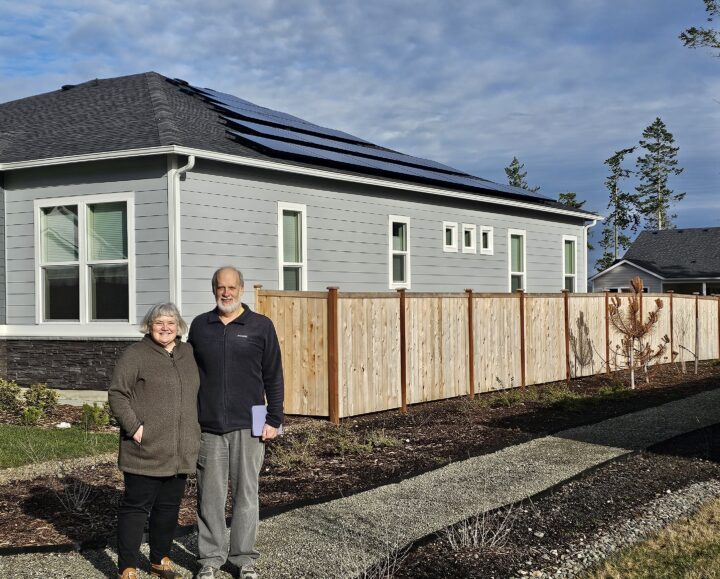
by Andy Cochrane | Mar 29, 2024
We hope to see you at the Port Angeles High School this weekend from 9-4 on Saturday and 9-3 on Sunday. We will be offering Spin Your Meter backwards Presentations at 10 Am and 1 PM on both Saturday and Sunday. Come find us in the Easy Gym to learn a little about the state of the solar industry, how it works on the Olympic Peninsula, and current financial incentives.
Details on the KONP home show are here https://www.myclallamcounty.com/advertising/2023-konp-home-show/
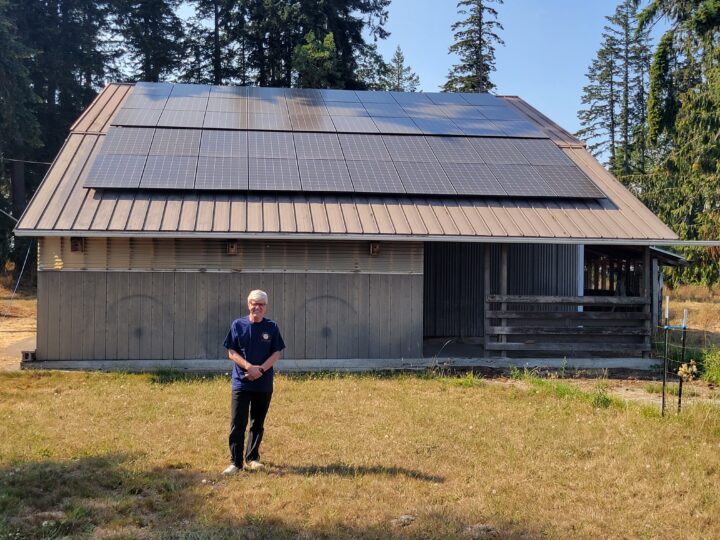
21 KW Sunpower Array, Port Angeles, October 2022
by Andy Cochrane | Mar 7, 2024
Puget Sound Energy (PSE) has taken a stance at this moment to extend and stabilize their Net Metering policy, at least through December 31, 2025. What will happen after that is in question at the moment, but we support this action by PSE. If you are a customer living in PSE territory considering solar – this window of time is absolutely the moment for you to act for yourself. No matter whether Net Metering changes after that, indications are that existing Net Metered customers will be grandfathered in with their existing agreement.
Washington’s Net Metering law has been progressive in some ways, but our solar protections have been handcuffed by low thresholds. A part of this has been that we have always had a relatively small amount of solar installations per capita, or per utility. As installers, sometimes over the years we have occasionally seen those low thresholds cause disruptions in the market and unpredictability for our clients and us. Currently our state law requires utilities to offer Net Metering to grid-tied solar customers, up to a capacity of 4% of the 1996 peak loads, a number which is reported by each utility and published by the state for each utility territory. Each different utility reaches whatever thresholds are in place at different times. For PSE, they have reached it now, and rather than disrupting the market while the legislature decides what to do in terms of extending Net Metering, PSE has decided to maintain stability at the moment.
The Net Metering law in Washington requires the utility to accept your excess clean energy to be back fed into the grid, and also requires them to compensate you at the same retail price they charge you, up to 100% of the energy you use each year. Many leading states have a much higher installed capacity of Net Metered solar compared to Washington at this point, and we have learned there is no economic or technical negative consequence to utilities in these situations.
Some utilities oppose net metering based on fear, ignorance and greed, but there is no impartial data to back up their opposition – only industry studies. For this reason, the Washington state legislature currently has a “Value of Solar” study planned as a budget line item in the current budget proposal. An unbiased study agreed to by a broad group of stakeholders including consumer protection advocates, will provide data to protect against unfounded claims of harm by the utility industry. We look forward to seeing the results of the Value of Solar study, but be aware that the process may also be vulnerable to being manipulated. There is no better time to install solar at your home than now while we are certain we have good rules in place to protect your right to install solar and use our grid to your best advantage.
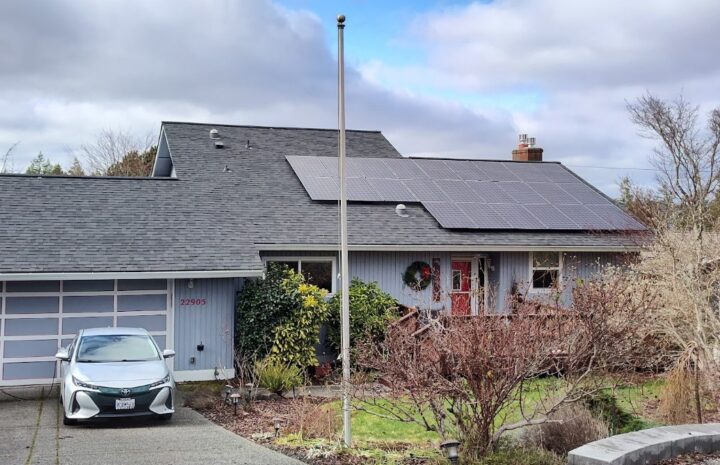
19.6 KW Sunpower Array, Poulsbo Residence, PSE Grid
by Andy Cochrane | Feb 27, 2024
When you are able to install solar on your home, you are not only creating clean local carbon-free energy, but you are also saving money on your bill, and helping the local utility to which you are interconnected. While it is true that the utility loses the chance to sell you a kwh for each kwh you produce, they are able to sell the excess power that you may be producing to your neighbors. The Net Metering law protects you as a homeowner and makes certain that you are compensated the full retail price of each kwh you produce, whether you use it yourself, or put it onto the grid. In the absence of a Net Metering contract, the utilities may not give you the fair value for this clean electricity created at the retail location. Not only does this fairly compensate those who install solar, it helps support our society’s goals in terms of reducing carbon-based energy dependence.
Washington has had a strong Net Metering law since 1998, and it has been appropriately updated a couple of times since then as we have learned more, and as solar has become more mainstream. When the Net Metering law is updated, we have also seen that the thresholds for how many net metered systems the utilities have to accept need to be increased. Our Net Metering law is now in dire need of an update again after languishing for the last several years while the legislature has been understandably busy. It is crucial that we update it again this spring to stay in line with the new federal policies and incentives available. Without an update, there will be some utilities, including PSE, which will exceed the required threshold for the amount of net metered systems and have signaled that they will dramatically reduce the compensation to the solar producers.
WASEIA (WA Solar Energy Industry Assoc) has been doing some heavy lifting in this regard for years, which mainly involves educating our legislators and more recently has required rebutting utility-oriented misinformation.
As an interested citizen, if you want to help out or gain better understanding of the issues, getting involved with WASEIA is one of the best ways you can do so. This industry group has recently created an individual membership tier for people to participate and contribute. We recommend you take a look and get engaged through this organization.
https://waseia.org/solar-ambassadors-support-waseias-efforts-to-educate-and-advocate-for-local-solar/

19.6 KW Sunpower Array (a portion, sub-array on other side of the east and west facing roof not shown), Poulsbo Residence, PSE Grid, February 2023
by Andy Cochrane | Oct 25, 2023
This article from the Wall Street Journal details the import resrictions on the largest solar panel suppliers. These restrictions, combined with tariffs dating back to the Trump administration, and the general difficulties with supplies, shipping, and labor have caused disruption in the construction pipeline for many of the largest projects in the US, and have caused headaches and layoffs among some installers. This is typical of what we sometimes see of the US federal policy, with different parts of the government working against themselves. In the recent IRA, new incentives and goals were put into place to accelerate the transition to clean energy, while these import restrictions are dampening the industry. The manufacturers claim the accusations of labor abuses are unfounded, and for some reason, it is taking years before there is a determination by the US govt.
https://www.wsj.com/articles/solar-panel-shortage-snarls-u-s-green-energy-plans-11669671279
Here at Power Trip Energy, we have been blessed with good predictable supplies of modules from Sunpower. We have been Sunpower dealers since 2010, and have been so happy with their quality and reliability. These last couple of years, we have been subject to supply shortages with various electrical supplies at times, but we have maintained a good supply of Sunpower pv modules. We have significantly increased our inventory of all parts on hand since early 2020 to avoid surprises. Sunpower products are not subject to these import restrictions, and in the past, they have won accolades for labor policy and clean materials handling practices in their manufacturing process.
Sometimes the solar industry is a bumpy ride, and insiders sometimes call it the solar coaster. If you work with us, we make it our goal that your only excitement will be from the production of reliable clean power. Please call us today if you would like to lean more.
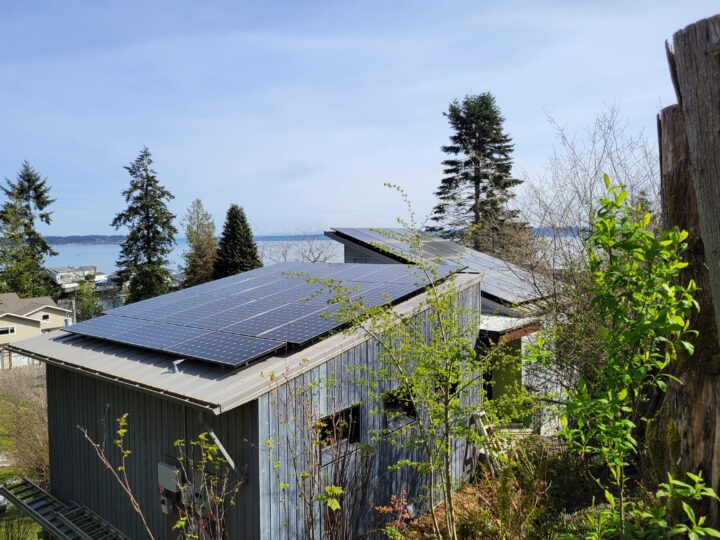
8.6 KW Phase II Sunpower Array in background, Sept 2022, with the 5.4 KW Phase I Sunpower Array in foreground, Oct 2014
by Andy Cochrane | Nov 30, 2022
The Forum will be anchored by several panelists at an in-person event at the Cotton Building in Port Townsend on Saturday, October 15th from 10-4pm. Morning Speakers will cover the processes from Purchasing Land, though Feasibility & into Permitting. Afternoon Speakers will drill down on current Building Incentives, ending with a panel on Future Uses for your Home.
Power Trip Energy’s Andy Cochrane will be on hand ini the afternoon to help make clear the available incentives for grid-tied solar pv.
The Cotton Building is located at 607 Water Street in Port Townsend.
Each section will include a Q&A format.
http://jeffcohomebuilders.com/housing-forum-2022/
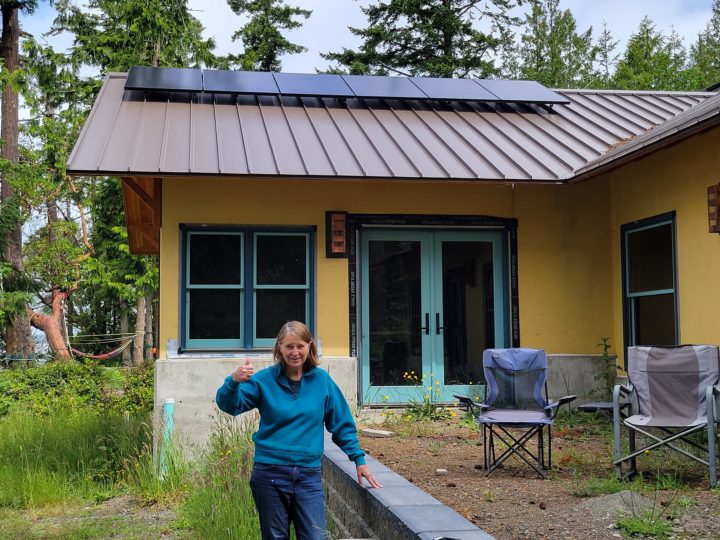
5.25 KW Sunpower Array, Nordland, September 2021
by Andy Cochrane | Oct 10, 2022
2030 Coming Up Quick – Let’s Goooo!
https://content.govdelivery.com/accounts/WADOC/bulletins/325cec1
Here in WA, the UTC (Utilities and Transportation Commision) and Dept of Commerce are the main regulators helping our privately owned and public utilities stay on track to meet our stated goals of carbon neutral by 2030 and 100% renewable energy by 2045. These rules and clarifications are important steps in meeting our goals.
We are helping our clients do their part. Would you like to join us?
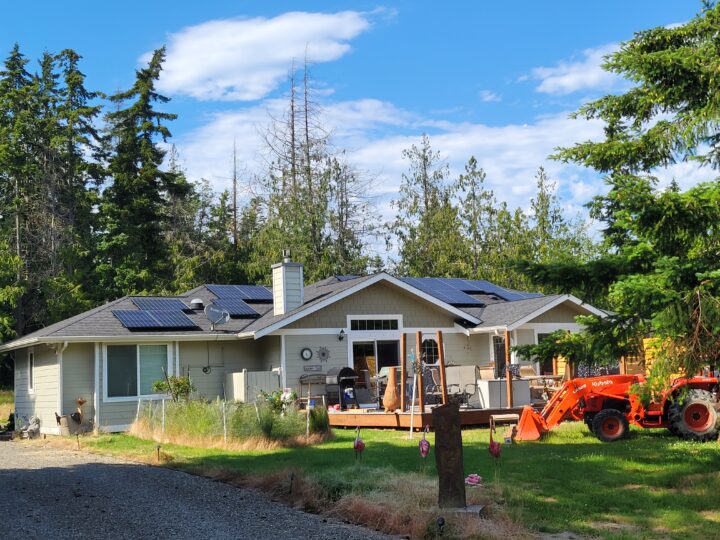
16.5 kw Sunpower on Clallam PUD grid in Sequim, June, 2022
by Andy Cochrane | Aug 1, 2022








